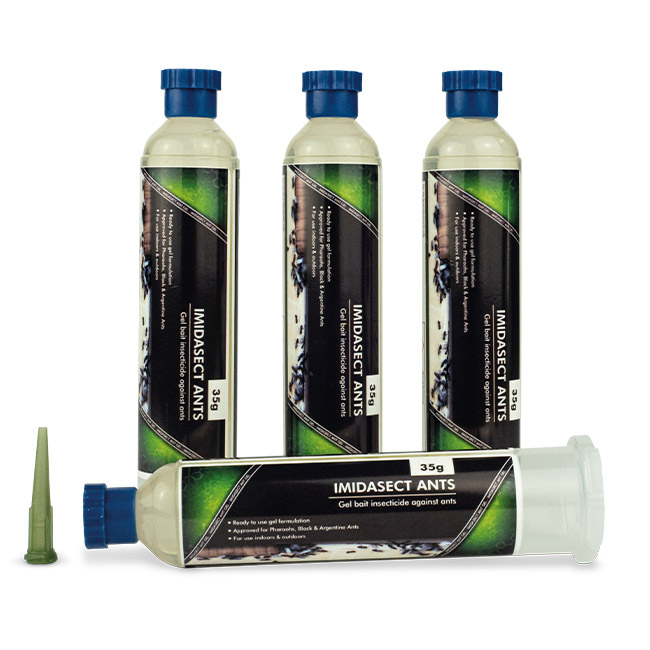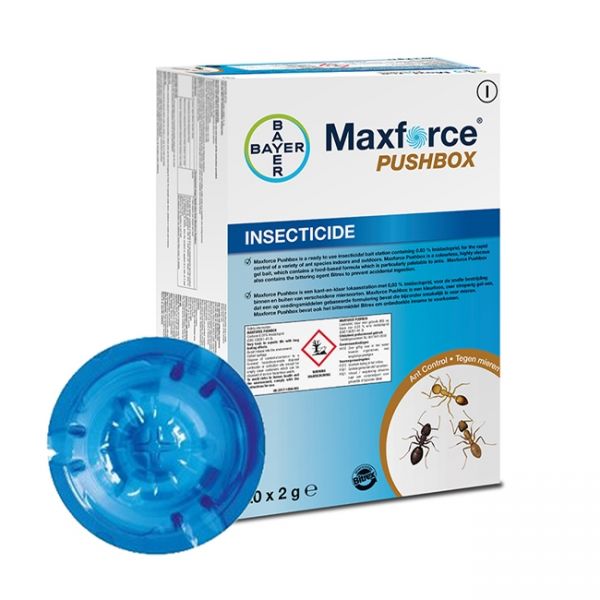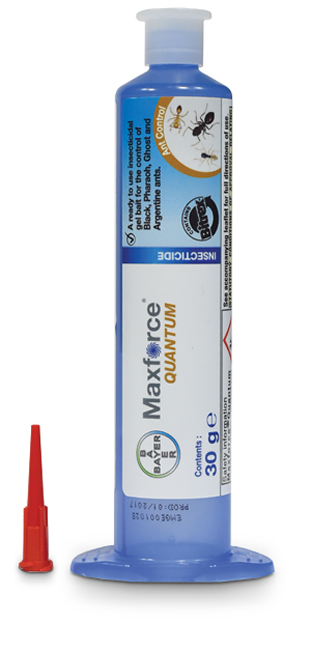Webbing Clothes Moth (Tineola bisselliella) Case-bearing Clothes Moth (Tinaea pellionella)
Clothes Moth (Tineola bisselliella)(Tinaea pellionella)
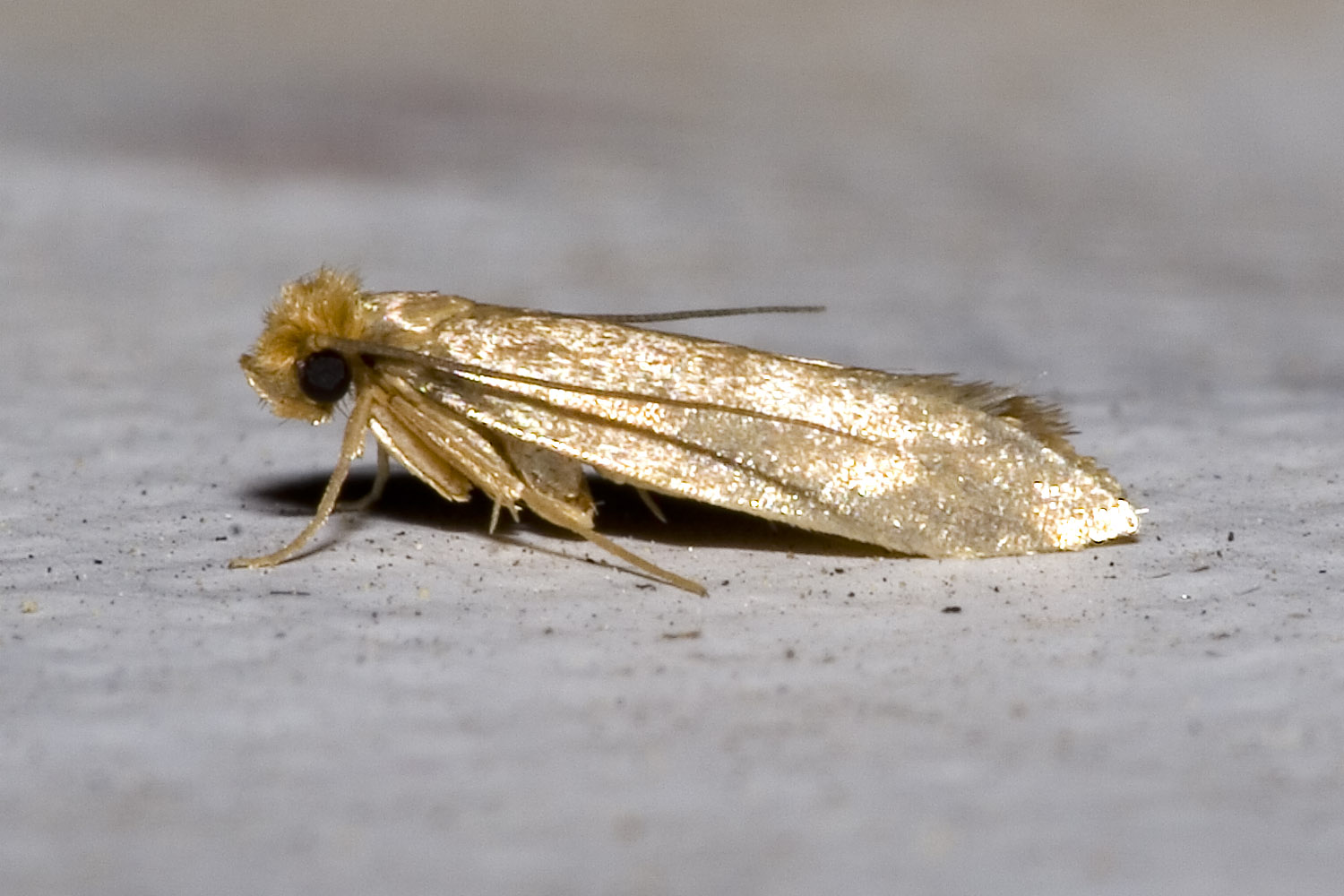 |
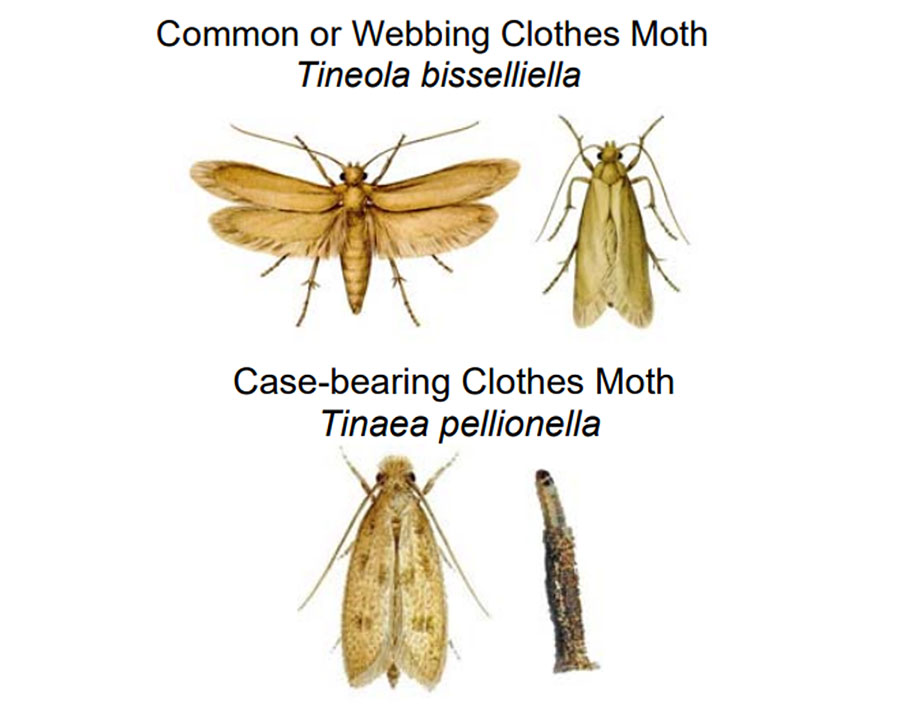 |
Identification:
The webbing clothes moth is generally light yellow in colour and has a shiny luster. The hind wings are grey-yellow and both fore and hind wings are fringed with fine hairs. The wings are quite thin and the wing span is between 12 - 16 mm. The adult moths have a reddish-gold tuft of hair on the top of their heads. The larvae are a dirty yellow with a yellow-brown head and can reach a length of 7 - 9 mm.
The case bearing clothes moth is less common than the webbing clothes moth. Larvae spin a small silken case around themselves as they feed. This cigar-shaped case enlarges as the larva grows. When crawling, the larva's head, thorax, and three pairs of legs, outside the case, drag it along.
Biology:
Eggs are laid amongst fibres or scattered at random. Each female lays up to 160 eggs during a period of 2-3 weeks. During the summer these hatch in 4-10 days to give an active, white translucent larva. This grows up to 10mm in length and the head becomes darker in colour, there are at least 5 moults. The full cycle takes between 88- 254 days, depending upon conditions.
Control:
Locate the source of infestation before treatment. Examine wardrobes and drawers for larvae cases, moths, and damage. Larvae prefer to feed in secluded, dark places. Look for signs of damage in carpets at the corners of the room and along edges, in stored clothing, and in other places not readily accessible. Adult moths do not feed in fabrics, but may be seen in darkened corners at night. Where old bird’s nests are present they should be removed and destroyed. Where necessary a residual insecticide can be applied to wall/floor and ceiling floor junctions and around carpet edges. If adult moth numbers are high a one shot aerosol, smoke generator or ULV treatment can be used as a quick knockdown
**Products to control Clothes Moth:
|
Imidasect Ant Gel (35g tube) |
Maxforce Pushbox (20 x 2g) |
Maxforce Quantum Gel (30g tube) |

